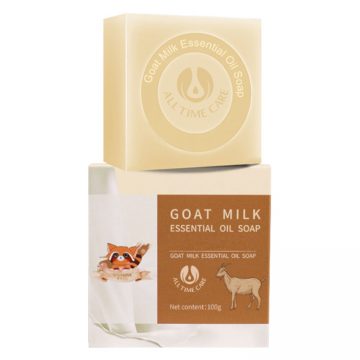
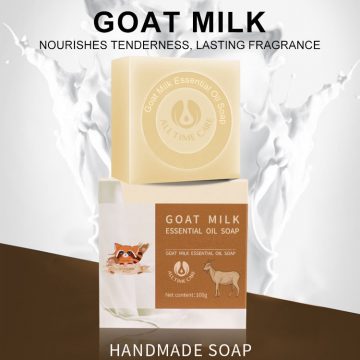
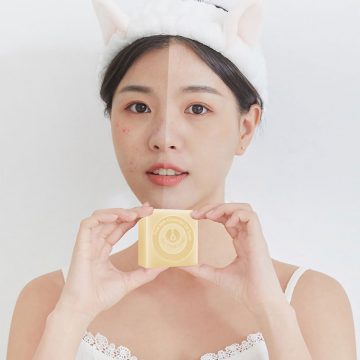
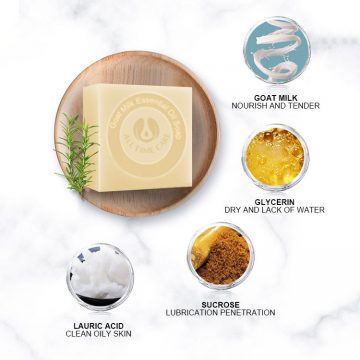
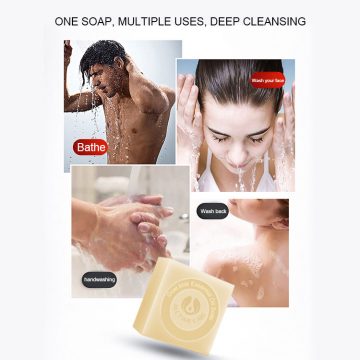
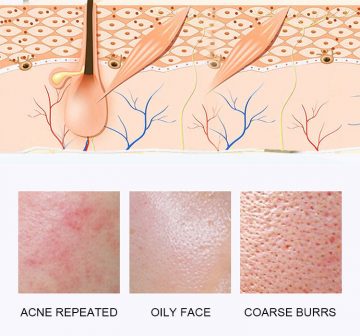
|
Logo
|
Customized logo is available
|
|
Payment Term
|
T/T, Paypal, Western Union,other
|
|
Sample
|
We can provide free samples, but the shipping costs need to be borne by the buyer
|
|
service
|
OEM ODM Private Label Service,Support small batch customization
|
Soap base is a basic raw material for making soap easily.
The soap base is made by the soap manufacturer adding salt during the soap making process to separate the glycerin, lye, water and the soap base to form a 100% soap base, and then use the machine to press the soap base into a specific place. Sell the desired shape later.
Handmade soap:
The characteristic of transparent soap is that it can make many changes. Although the handmade soap made by cold method can also change a lot, it is not as good as the transparent soap base. With rich color changes, additives and essential oils, it creates amazing effects. , Often people love it; and its production process is relatively simple, even children can also operate, it is very suitable for DIY.
Cut soap base:
Take out the soap base, visually check the amount of handmade soap to be made, and cut it off with a knife in an appropriate place. After that, cut the cut soap base into small pieces and make any shape you want. You can cut into cubes, slices, shreds, etc. The purpose of cutting into small pieces is to accelerate melting, so the smaller the cut, the faster the melting speed. Regardless of how it is cut, it is recommended that the size of each piece is the same, so that when heated, part of the soap base has not been overheated, while the other part has not melted.
Heat to melt the soap base:
The transparent soap base will begin to melt above 45°C. It is usually melted by water heating or microwave heating. The purpose of water-proof heating is to prevent the soap base from scorching. If you want to heat it directly, you must adjust the fire to a low level, and beware of scorching at any time! When heating with water, just use a small fire, and the water temperature does not need to be too high. If you see the water starts to bubble or even boil, it means that the water temperature is too high. You must quickly turn down the fire or temporarily turn off. Try not to stir the soap when heating, otherwise it will produce a lot of unnecessary bubbles. If you use color blocks or titanium dioxide (titanium dioxide) to color, you must heat it together with the soap base at the same time. As for the amount to be added, it depends on personal preference and is determined by experience (generally, just a little bit is enough).
Add additives:
When making functional handmade soaps, additives are often needed, and the additives can be added to the soap solution at this time.
Toning:
Use the color liquid to adjust the color. The concentration of the color liquid is very high, so add one drop at a time. Stir it evenly. If the color is not dark enough, add another drop. It is too dark and can only be remelted with a lot of soap base to make the color lighter. Common color liquids have three colors: red, yellow, and blue. Other colors can be derived from these three tones, for example: red + yellow → orange, yellow + blue → green, blue + red → purple. In addition, light blue is more difficult to adjust, because the soap base is slightly yellow, even if only a little blue liquid is added, it still looks a little blue-green. If the transparent soap base you buy is very transparent and does not feel a little yellow, then your soap base may be made of surfactants, not pure soap. If you use color patches, the toning is done when the soap base is melted. If you want to make colorless or white soap, you don’t need to add color liquid, and this step can be omitted.
Fragrance:
The taste of handmade soap is usually produced by adding flavors or essential oils. Essential oils are more expensive, and the taste disappears faster. Some essential oils will change their taste after adding soap, but essential oils have curative effects. The fragrance is cheaper and has a longer-lasting taste, but it has no effect. If the temperature of the soap liquid is still very high when adjusting the fragrance, you must wait for the temperature to drop a little before adding essential oils or essences, especially those who use essential oils, because the essential oils evaporate quickly at high temperatures, so when the temperature of the soap is very high, the essential oils may be dropped. wasted. Some essential oils or fragrances will slightly change the color of the soap after adding it to the soap. You can reverse the previous step with this step, and then adjust the color after the fragrance is adjusted. The amount of fragrance or essential oil added is about 0.5% to 2% of the soap. The soap in a half cup of small steel cup is about 100CC, so you can add 10 to 40 drops of fragrance or essential oil (1CC is about 20 drops). The amount of fragrance or essential oil dripped varies according to the type and personal preference. If you like a thicker one, add a little more, and if you like a lighter fragrance, add a little less. Generally speaking, these scents will not remain on the skin after a shower. superior. If you want to make natural and fragrance-free soap, this step can be omitted. Soap for sensitive skin, it is recommended not to add fragrance, preferably not to add pigment, because these things will cause some irritation to the skin.
Into the mold:
Pour the color solution with adjusted color and taste into the mold, and pour it about eight or nine minutes full, or the desired height. If it is too full, it will not be easy to demold. The mold must be washed and dried in advance.
After pouring the soap, you can put the soap aside and let it cool. After about an hour, the soap will solidify, and it can be packaged or used directly after it is released from the mold. If you want these soaps to solidify quickly, you can put them in the refrigerator or freeze them, and they can solidify in about 15 minutes to half an hour. Taking advantage of the free time of solidification, you can clean the utensils and the environment. The small steel cup and the stirring rod can be washed initially with warm water in the water tray. The warm water accelerates the melting of the soap, making it easier and more pleasant to wash.
Demoulding:
After the handmade soap is completely set, it can be demoulded. When demolding, the first step is to pull the mold opening to the side to allow air to enter between the soap and the mold, so that air enters all sides. Turn the mold upside down and press the bottom of the mold so that air can enter the bottom. When the air completely enters the bottom, the soap will be separated from the mold. At this time, the soap can be buckled out.
Modification:
If there are a lot of bubbles on the handmade soap or need to be modified for other reasons, you can use the back of a disposable plastic knife or a dry cloth or toilet paper to decorate it. Use a plastic knife to scrape off the ugly parts, and then wipe with a dry cloth or toilet paper to make the soap line soft. If the soap is beautiful enough or advocating natural beauty, and you don’t want to waste any soap, this step can be omitted.
Packaging and storage:
If the modified handmade soap is placed in the air, there will be small drops of water on the surface of the soap the next or a few days, as if sweating. This is because the glycerin in the handmade soap attracts and condenses the moisture in the air on the surface of the soap. , This does not affect the essence of the soap, but it will affect the appearance. In order to avoid or reduce the production of small water droplets, the handmade soap needs to be wrapped with plastic wrap or PE film and stored in a cool and dry place.
Similar differences:
What is the difference between soap-based soap and cold-made soap?
Soap made from soap is a thermal method (hereinafter referred to as thermal soap). Hot soap requires continuous heating during the production process. Its advantage is that the soap production time is short, and it is ready to use.
Most of the soaps sold in the market and produced in soap bars are made by thermal methods, and glycerin is produced during the soap making process, so glycerin is generally extracted to avoid water absorption. The remaining soap, plus the additives, becomes the commercially available soap we have seen.
Cold soap is to keep the glycerin completely in the soap, and glycerin accounts for almost a quarter of the cold soap. Because glycerin is a natural moisturizing agent, it will not be as tight as soap without glycerin after cold soaping.
However, no matter how much glycerin there is in handmade soap or cold soap, the sebum film has been washed away, so you should apply skin care products to replace the sebum film to lock the water immediately after wiping off the facial moisture.





